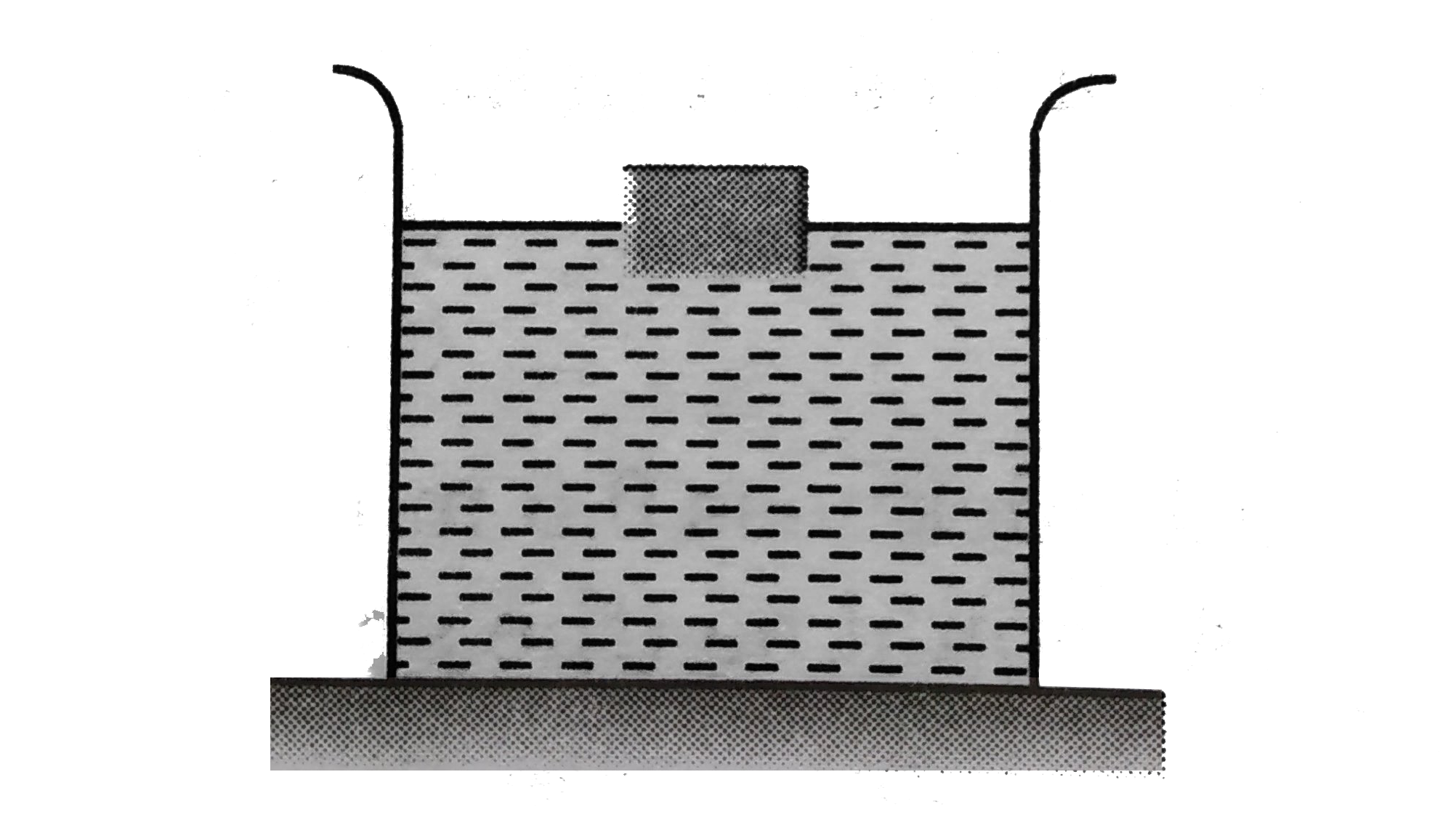A body of density ρ floats with volume V1 of its total volume V immersed in a liquid of density ρ1 and with the remainder of volume V2 immersed in another liquid of density ρ2 where ρ1>ρ2. Find the volume immersed in two liquids. (V1 and V2).
To solve the problem, we need to analyze the forces acting on the floating body and apply the principle of buoyancy. Here's a step-by-step solution:
Step 1: Understand the forces acting on the body
The body experiences two main forces:
1. The weight of the body acting downwards, which is given by:
W=ρVg
where ρ is the density of the body, V is its total volume, and g is the acceleration due to gravity.
2. The buoyant forces acting upwards from the two liquids:
- From liquid 1 (density ρ1):
Fb1=ρ1V1g
- From liquid 2 (density ρ2):
Fb2=ρ2V2g
Step 2: Set up the equilibrium condition
For the body to float in equilibrium, the total buoyant force must equal the weight of the body:
W=Fb1+Fb2
Substituting the expressions for weight and buoyant forces, we get:
ρVg=ρ1V1g+ρ2V2g
We can cancel g from both sides:
ρV=ρ1V1+ρ2V2
Step 3: Relate the volumes V1 and V2
Since the total volume of the body is V, we have:
V2=V−V1
Substituting this into the equilibrium equation gives:
ρV=ρ1V1+ρ2(V−V1)
Expanding this, we get:
ρV=ρ1V1+ρ2V−ρ2V1
Rearranging terms, we have:
ρV−ρ2V=(ρ1−ρ2)V1
Factoring out V on the left side:
V(ρ−ρ2)=(ρ1−ρ2)V1
Step 4: Solve for V1
Now, we can solve for V1:
V1=V(ρ−ρ2)ρ1−ρ2
Step 5: Solve for V2
Using the relationship V2=V−V1:
V2=V−V(ρ−ρ2)ρ1−ρ2
Factoring out V:
V2=V(1−ρ−ρ2ρ1−ρ2)
Simplifying this gives:
V2=V(ρ1−ρρ1−ρ2)
Final Results
Thus, the volumes immersed in the two liquids are:
V1=V(ρ−ρ2)ρ1−ρ2
V2=V(ρ1−ρρ1−ρ2)
The body experiences two main forces:
1. The weight of the body acting downwards, which is given by:
W=ρVg
where ρ is the density of the body, V is its total volume, and g is the acceleration due to gravity.
- From liquid 1 (density ρ1):
Fb1=ρ1V1g
- From liquid 2 (density ρ2):
Fb2=ρ2V2g
For the body to float in equilibrium, the total buoyant force must equal the weight of the body:
W=Fb1+Fb2
Substituting the expressions for weight and buoyant forces, we get:
ρVg=ρ1V1g+ρ2V2g
We can cancel g from both sides:
ρV=ρ1V1+ρ2V2
Since the total volume of the body is V, we have:
V2=V−V1
Substituting this into the equilibrium equation gives:
ρV=ρ1V1+ρ2(V−V1)
Expanding this, we get:
ρV=ρ1V1+ρ2V−ρ2V1
Rearranging terms, we have:
ρV−ρ2V=(ρ1−ρ2)V1
Factoring out V on the left side:
V(ρ−ρ2)=(ρ1−ρ2)V1
Now, we can solve for V1:
V1=V(ρ−ρ2)ρ1−ρ2
Using the relationship V2=V−V1:
V2=V−V(ρ−ρ2)ρ1−ρ2
Factoring out V:
V2=V(1−ρ−ρ2ρ1−ρ2)
Simplifying this gives:
V2=V(ρ1−ρρ1−ρ2)
Thus, the volumes immersed in the two liquids are:
V1=V(ρ−ρ2)ρ1−ρ2
V2=V(ρ1−ρρ1−ρ2)
Topper's Solved these Questions
- FLUID MECHANICSBOOK - CENGAGE PHYSICS ENGLISHCHAPTER - FLUID MECHANICSEXERCISE - Exercise 4.4
10 Videos
- FLUID MECHANICSBOOK - CENGAGE PHYSICS ENGLISHCHAPTER - FLUID MECHANICSEXERCISE - Subjective
25 Videos
- FLUID MECHANICSBOOK - CENGAGE PHYSICS ENGLISHCHAPTER - FLUID MECHANICSEXERCISE - Exercise 4.2
11 Videos
- DIMENSIONS & MEASUREMENTBOOK - CENGAGE PHYSICS ENGLISHCHAPTER - DIMENSIONS & MEASUREMENTEXERCISE - Integer
2 Videos
- GRAVITATIONBOOK - CENGAGE PHYSICS ENGLISHCHAPTER - GRAVITATIONEXERCISE - INTEGER_TYPE
1 Videos
Similar Questions
Knowledge Check
A body floats in a liquid A of density ρ1 with a part of it submerged inside liquid while in liquid B of density ρ2 totally submerged inside liquid. The densities ρ1 and ρ2 are related as :
Aρ1=ρ2Bρ1<ρ2Cρ1>ρ2Dnothing can be said
A body of density ρ is immersed in a liquid of density ρL.State condition when the body will (i) float (ii) sink in liquid.
View SolutionA body weighs W1 in a liquid of density ρ1 and W2 in a liquid of density ρ2. What is the weight of body in a liquid of density ρ3?
View SolutionA body P floats in water with half its volume immersed. Another body Q floats in a liquid of density 34th of the density of water with two - third of the volume immersed. The ratio of density of P to that of Q is
View SolutionA uniform cube of mass M is floating on the surface of a liquid with three fourth of its volume immersed in the liquid (density=ρ). The length of the side of the cube is equal to

View SolutionA drop of liquid of density ρ is floating half-immersed in a liquid of density d. If σ is the surface tension the diameter of the drop of the liquid is
View SolutionA block of material has a density ρ1 and floats three-fourth submerged in a liquid of unknown density. Show tht the density ρ2 of the unknown liquid is given by ρ2=43ρ1.
View SolutionTwo liquids of densities 2ρ and ρ having their volumes in the ratio 3:2 are mixed together. Density of the mixture will be
View Solution
